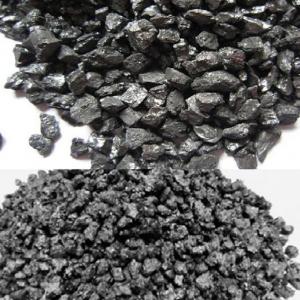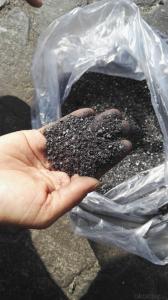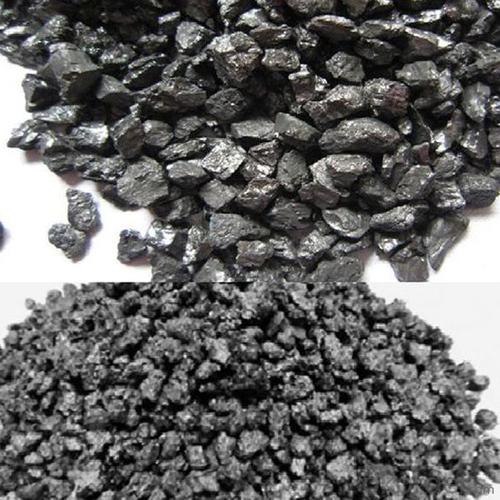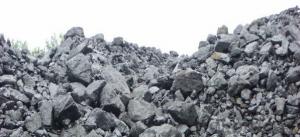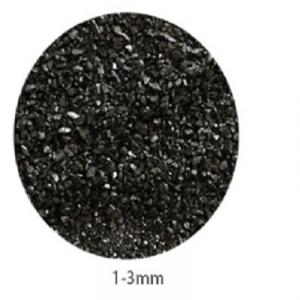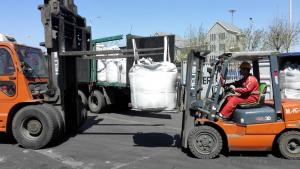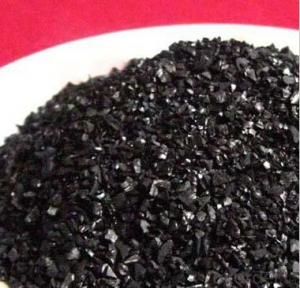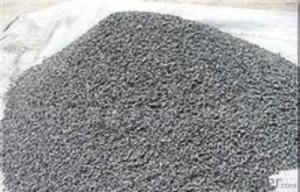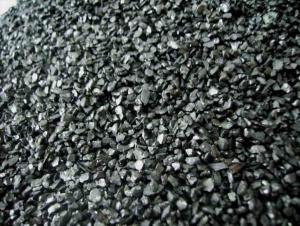Fixed carbon 90 Calcined anthracite as carbon additive
- Loading Port:
- Tianjin
- Payment Terms:
- TT /LC
- Min Order Qty:
- 20 m.t.
- Supply Capability:
- 10000 m.t./month
OKorder Service Pledge
OKorder Financial Service
You Might Also Like
Specification
Introduction
Carbon additive comes from delayed coke which extracted from oil refinery. Although carbon additive contains a little bit higher level of sulfur and nitrogen than pitch coke, the price advantage still makes it widely used during steel-making and founding as a kind of carbon additive/carburant. We provide carbon additive to steel plant to increase the carbon amount.
Features
Carbon Additive also called Calcined anthracite Coal, Gas Calcined Anthracite Coal, Carbon Raiser, Recarburizer, injection coke, charging coke and etc.
The main raw material of our Carbon Additive is Ningxia unique high quality Taixi anthracite, with characteristic of low ash and low sulfur. Carbon additive has two main usage, fuel and additive. When being used as the carbon additive of steel-smelting, and casting, the fixed carbon may achieve above 95%.
Best quality Taixi anthracite as raw materials through high temperature calcined at 1200-1250 ℃ for 24 hours by the DC electric calciner with results in eliminating the moisture and volatile matter from Anthracite efficiently, improving the density and the electric conductivity and strengthening the mechanical strength and anti-oxidation, It has good characteristics with low ash, low resistivity, low carbon and high density. It is the best material for high quality carbon products, it is used as carbon additive in steel industry or fuel.
We have the honor to be steady supplier of major steel company in Saudi Arabia, Philipines, Australia, Japan and other counties in the world
Specifications
PARAMETER UNIT GUARANTEE VALUE | |||||
F.C.% | 95MIN | 94MIN | 93MIN | 92MIN | 90MIN |
ASH % | 4MAX | 5MAX | 6MAX | 7MAX | 8MAX |
V.M.% | 1 MAX | 1MAX | 1.5MAX | 1.5MAX | 1.5MAX |
SULFUR % | 0.5MAX | 0.5MAX | 0.5MAX | 0.5MAX | 0.5MAX |
MOISTURE % | 0.5MAX | 0.5MAX | 0.5MAX | 0.5MAX | 0.5MAX |
Pictures
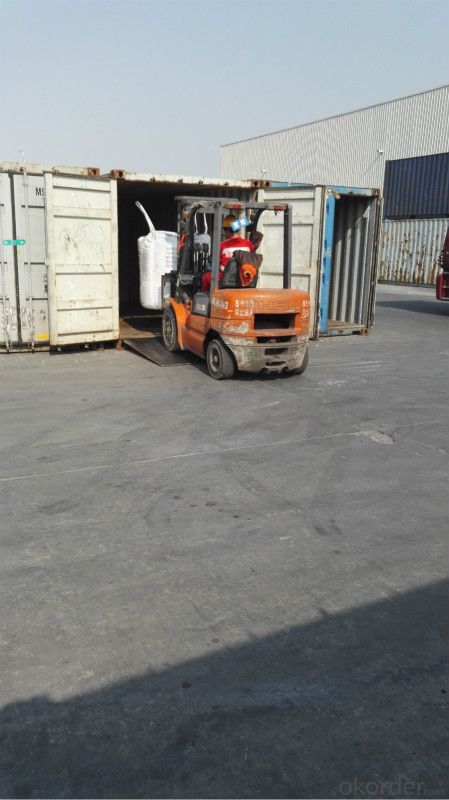
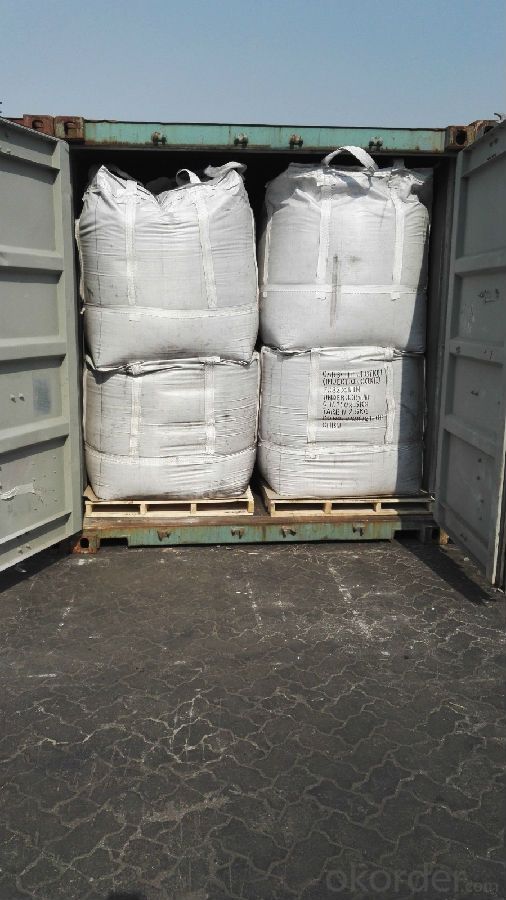
FAQ:
What is the packing?
In 25kg bag/ In jumbo bags without pallet/ Two jumbo bags with one pallet/ or as customers’ request
2. What is the production capacity?
10 thousand tons per month
3 What is payment term?
Irrevocable LC at sight/ 20% down payment by T/T and 80% against BL copy byT/T/ or to be discussed
4 What is the service?
We will send sample to the third party(CIQ, CCIC, SGS,BV or to be discussed) for checking, and present the test certificate and loading repot of shipment.
- Q: What is carbon nanosensor?
- A carbon nanosensor is a type of sensor that utilizes carbon-based materials at the nanoscale to detect and measure various substances or physical properties. These sensors are extremely small and have a high sensitivity, allowing them to detect even minute amounts of target molecules or changes in their environment. Carbon nanosensors can be engineered to target specific molecules or properties by functionalizing the surface of the carbon nanomaterials with specific receptors or probes. Additionally, carbon nanosensors can be integrated with other technologies, such as electronics, to enable real-time monitoring and data analysis. The unique properties of carbon nanomaterials, such as their high surface area, electrical conductivity, and chemical stability, make them ideal for constructing sensitive and versatile sensors in a wide range of applications, including environmental monitoring, medical diagnostics, and food safety.
- Q: Why is the solubility of carbon in austenite larger than that in ferrite?
- Its properties are similar to that of pure iron, and its plasticity and toughness are good, and its strength and hardness are low. It is usually massive or flaky in steel.The austenite structure is a face centered cubic lattice with a gap radius (0.414~0.225). Because of the larger size of the lattice gap, the solubility of carbon in gamma -Fe is relatively large. It has good plasticity.
- Q: How does carbon affect the formation of avalanches?
- Carbon does not directly affect the formation of avalanches. Avalanche formation primarily depends on factors such as snowpack stability, weather conditions, terrain features, and human activities. Carbon is not a significant factor in these processes.
- Q: Why use carbon batteries for alarm clocks?
- You said carbon battery is called alkaline battery his standard voltage is 1.5V the charging the battery is generally 1.2V. to this problem is not a reward.
- Q: How is carbon involved in the metabolism of carbohydrates, proteins, and fats?
- Carbon is a fundamental element involved in the metabolism of carbohydrates, proteins, and fats. In all three macronutrients, carbon atoms play a crucial role in the formation of their molecular structures. In carbohydrates, carbon is present in the form of glucose, which is the primary source of energy for the body. Through a process called glycolysis, glucose is broken down into smaller molecules, generating ATP (adenosine triphosphate) for cellular energy. The carbon atoms in glucose are rearranged and converted into intermediate compounds that are further used in other metabolic pathways. Proteins, on the other hand, are complex molecules composed of amino acids, each containing a carbon atom. During protein metabolism, carbon atoms participate in various reactions, such as deamination and transamination, which allow for the synthesis of new proteins or the breakdown of existing ones. Carbon atoms also contribute to the formation of peptide bonds that link amino acids together, forming the backbone of proteins. In the metabolism of fats or lipids, carbon is predominantly found in the fatty acid chains. These carbon chains provide a high-energy fuel source, as they can be broken down through a process called beta-oxidation. Carbon atoms from fatty acids are sequentially cleaved, producing acetyl-CoA, which enters the citric acid cycle (also known as the Krebs cycle) to generate ATP. Additionally, carbon atoms from fatty acids can be used for the synthesis of other molecules, such as cholesterol and hormones. Overall, carbon is an essential component in the metabolism of carbohydrates, proteins, and fats. Its involvement in these metabolic processes allows for the production of energy, the synthesis and breakdown of essential molecules, and the regulation of various physiological functions.
- Q: What is the impact of carbon emissions on agriculture?
- Agriculture is significantly impacted by carbon emissions, with effects seen in both crop production and livestock farming. The primary consequence of increased carbon emissions is climate change, which has the ability to change weather patterns and temperatures. These alterations can disrupt the delicate balance necessary for successful agriculture. The rising temperatures caused by carbon emissions result in increased evaporation, which can diminish soil moisture and hinder crop growth. This leads to more frequent and severe droughts, causing water scarcity and reduced crop yields. Moreover, extreme weather events like floods, storms, and hurricanes become more common, causing extensive damage to crops and farmland. Another outcome of carbon emissions is the modification of atmospheric composition. Elevated levels of carbon dioxide (CO2) stimulate the growth of specific weeds and invasive species, which compete with crops for vital resources such as sunlight, water, and nutrients. This competition ultimately results in decreased crop yields and lower-quality produce. Furthermore, carbon emissions contribute to air pollution, including the formation of ozone. High levels of ozone can harm plant tissues and limit photosynthesis, thus reducing crop productivity. Livestock health is also negatively affected by ozone, leading to decreased growth rates and milk production. The impact of carbon emissions on agriculture extends beyond crop production to livestock farming. Changes in climate and temperature can adversely affect animal health and productivity. Heat stress becomes a significant issue, resulting in reduced fertility, lower milk yields, and increased vulnerability to diseases. Additionally, livestock require sufficient access to water and nutritious feed, which can become scarce due to droughts and heightened competition for resources. In conclusion, carbon emissions have a detrimental impact on agriculture, affecting both crop production and livestock farming. Climate change, altered weather patterns, and increased competition for resources all contribute to reduced yields, lower-quality produce, and decreased livestock productivity. It is crucial to address and mitigate carbon emissions to ensure the sustainability and resilience of the agricultural sector in the face of these challenges.
- Q: How does carbon dioxide contribute to global warming?
- Carbon dioxide (CO2) contributes to global warming primarily through the greenhouse effect. This effect occurs when certain gases in the Earth's atmosphere trap heat from the sun, preventing it from escaping back into space. While the greenhouse effect is a natural process that helps maintain the Earth's temperature, human activities, such as the burning of fossil fuels, have significantly increased the concentration of CO2 in the atmosphere. When fossil fuels like coal, oil, and natural gas are burned for energy production, CO2 is released into the atmosphere as a byproduct. This excess CO2 acts as a heat-trapping gas, absorbing and re-emitting heat radiation that would otherwise escape into space. As a result, the Earth's temperature is increasing, leading to global warming. The increase in global temperatures has far-reaching consequences. It accelerates the melting of polar ice caps and glaciers, causing rising sea levels that threaten coastal areas and low-lying islands. It also disrupts weather patterns, leading to more frequent and severe heatwaves, droughts, and extreme weather events like hurricanes and floods. Moreover, global warming affects ecosystems, causing shifts in habitats, loss of biodiversity, and detrimental impacts on plant and animal species. The importance of reducing carbon dioxide emissions is crucial to mitigating global warming. This can be achieved through various means, including transitioning to renewable energy sources, improving energy efficiency, investing in sustainable transportation, and adopting practices that promote reforestation and carbon sequestration. By taking these actions, we can slow down the rate of global warming and mitigate its adverse effects on the planet and its inhabitants.
- Q: How does deforestation affect carbon levels?
- Deforestation significantly increases carbon levels in the atmosphere. Trees absorb carbon dioxide during photosynthesis, acting as a natural sink for this greenhouse gas. When forests are cut down or burned, they release the stored carbon back into the atmosphere as carbon dioxide. This process contributes to the greenhouse effect, leading to climate change and global warming.
- Q: What is carbon black rubber?
- Carbon black rubber, which incorporates carbon black as an additive, is a variant of rubber. Carbon black, a finely divided form of carbon generated from the incomplete combustion of hydrocarbon fuels, is utilized in rubber compounds to enhance their mechanical characteristics, including tensile strength, abrasion resistance, and resilience. Within the rubber matrix, the carbon black particles are evenly dispersed, serving to reinforce the material and amplify its durability and performance. Carbon black rubber finds extensive application in the manufacturing of tires, conveyor belts, gaskets, seals, as well as a range of automotive and industrial rubber goods.
- Q: What is the basic principle of carbon fourteen detection?
- There are 3 kinds of carbon isotopes in nature, and their weight ratio is 12:13:14. They are expressed by carbon -12, carbon -13 and carbon -14 respectively. The first two are stable isotopes. Carbon -14 is radioactive. It exists in the atmosphere and is generated in the upper atmosphere by cosmic rays, neutrons, and atmospheric nitrogen nuclei. It combines C4O2 molecules with oxygen in the atmosphere, which is the same as carbon dioxide (CO2). Therefore, it mixes with carbon dioxide to participate in the natural carbon exchange movement. It is absorbed by plants by photosynthesis and stored in plants. People and animals need to eat plants, so they are also stored in human and animal bodies. During the life of the organism, they continuously acquire the radioactive carbon from the atmosphere. But when an animal or plant dies, it stops absorbing and reduces the radioactive carbon in the body. For about 5730 years, its content could be attenuated by half. So physicists call the half-life 5730 years. Therefore, as long as the instruments to measure the trees, grain, animal bones and bone biological remains in the existing carbon content of -14, compared with its original carbon -14 level, you can calculate their death in many years ago, which can be inferred and their coexistence remains (such as construction sites, tombs or other relics how many years have elapsed since).Pro, please [adopted the answer], your adoption is the driving force for my answer, thank you.
Send your message to us
Fixed carbon 90 Calcined anthracite as carbon additive
- Loading Port:
- Tianjin
- Payment Terms:
- TT /LC
- Min Order Qty:
- 20 m.t.
- Supply Capability:
- 10000 m.t./month
OKorder Service Pledge
OKorder Financial Service
Similar products
Hot products
Hot Searches
Related keywords
